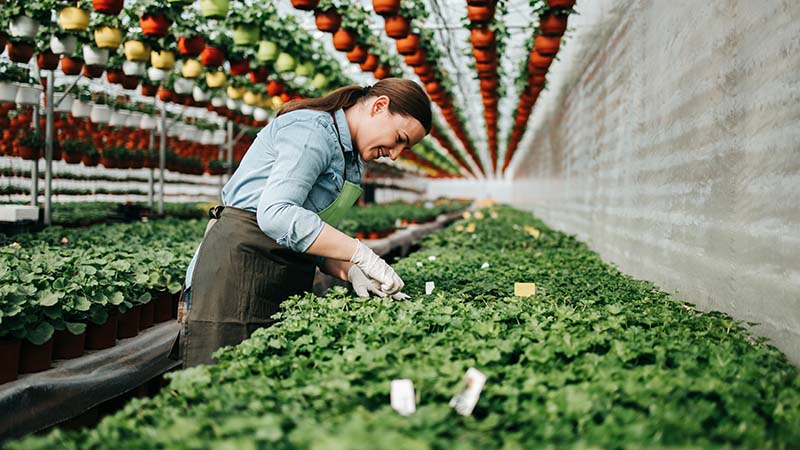Talking Shop: 4 Greenhouse Planning Techniques
 The question of space and environment planning is a task all growers need to address each season as we are planning production. If at all possible, space should be considered before or during the planning process, not afterwards.
The question of space and environment planning is a task all growers need to address each season as we are planning production. If at all possible, space should be considered before or during the planning process, not afterwards.
When addressing space planning, there is a number of factors that should be considered. Various containers occupy a specific amount of space and the square footage required for each container must be calculated. Growers need to know the environmental requirements of each specific crop being produced, and allocate the necessary space required. Watering, nutritional and soil pH requirements should also be known and used as a guide when planning space. By planning space based on crop needs, growers will improve the quality of the finished crops and eliminate growing challenges.
Use these four primary space planning techniques when planning production.
1. Plan And Make It Fit
This program essentially involves planning all the various crops and then finding a way to “fit everything in” as the crops are planted. Many growers have followed this planning method in the past and a few have been very successful. However, it’s quite obvious that this method tends to cause shrink due to excess plants and reduced quality. This is caused by lack of space and improper environments. It also increases the grower’s stress level at a time when there is plenty to go around already.
2. Grow The Same Amount As The Year Before
I believe this method is followed by quite a few growers. We simply review the crops grown the previous year — whether they all fit, if there was any extra space remaining — and evaluate the overall crop performance. If the previous year went smoothly and no major changes have been made to the container sizes being grown, the same number can be planned again.
3. Map Out The Greenhouse
This method involves creating a map of all growing areas available to the grower. Preferably this map can be created using a spreadsheet or computer-generated-map. A paper map can also be created if preferred and filled in as crops are planned. As the grower plans the various crops, the square footage and production time is allocated for as needed. This process can be followed until all crops are assigned an area or until space is no longer available. Adjustments can be made to plans based on the final results of the initial mapping.
4. Let Your Production Computer Software Do It
There are now various computer software systems available that integrate production planning directly to growing space. These systems are built to consider not only space but also environments, container sizes and crop times. All crops are built by the container size with a crop time, potential hold time, required environment and additional crop requirements attached. As the grower enters the production plan into these systems, specific space is assigned and the process continues until all plans are entered or until available space is used.
Planning Is Essential For A Successful Season
Whichever space planning technique a grower may use, it’s critical to know the cultural requirements of the crops involved, crop times, square footage required for each container and the estimated sales timeline for each crop. Take good notes and use them when developing future crop plans. Remember, the only bad plan is no plan at all.









